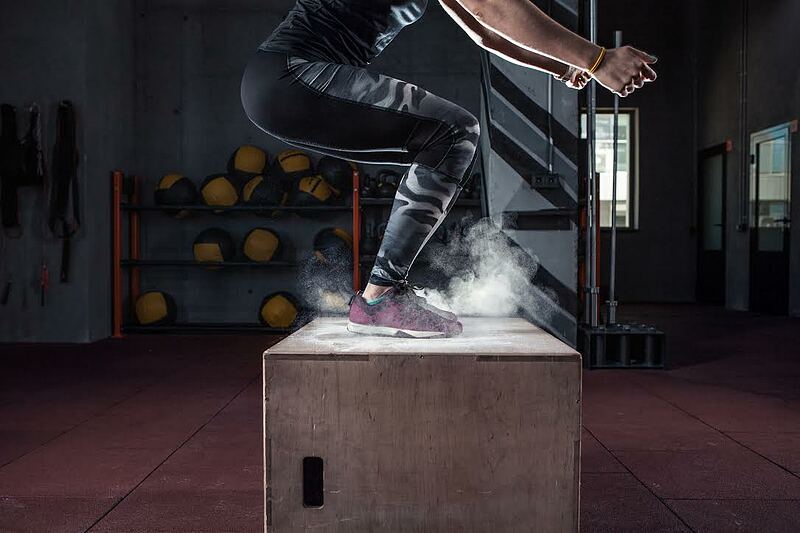Creating a Culture of High Performance
Coach DevelopmentABOUT THE AUTHOR

Tim Robinson
Tim is the archetypal coach. His father, a teacher, coached collegiate and high school football. Both of his uncles did the same. His older brother has been a head wrestling coach and is currently an assistant football coach. So, it wasn’t due to divine providence that for the better part of the last decade Tim was a collegiate football and strength and conditioning coach. From the junior college ranks to the PAC 12 Coach Rob garnered invaluable experience across nearly every level of collegiate competition. Now, Tim coaches up TrainHeroic’s invaluable network of coaches.
“How do I create better engagement with my athletes?”
“So, do I just trust that my clients/athletes will log their data and record it accurately?”
“How can TrainHeroic ensure that my athletes will participate in their training?”
These are questions I’m asked on a daily basis by coaches from all over the planet. There’s something I want you to keep in mind. Technology, software, data analysis programs, etc. are all exceptional tools to help coaches with a particular pain point. That’s why they were created: to solve a problem.
They were not invented to be the be-all and end-all.
At TrainHeroic, we aim to be the best tool in your arsenal, not THE arsenal. We want to remain laser-focused and do what we do to an exceptional standard. The solution to the aforementioned questions is not simply to introduce technology into your weight room and expect immediate compliance – man, that would be great though.
Technology can provide you plenty of resources that pen and paper and spreadsheets cannot. But coaching is a human endeavor. It is a people business. Don’t forget why your athletes or clients came to you (the coach) in the first place. They entered your weight room for one specific reason. Because you are who you are – the single most important asset in their athletic, fitness, and wellness journey. They expect you to set a high standard, give expert instruction, manage their expectations, and drive them toward their goals.
That being said, the answers to the questions above are much more deeply rooted. The answers stem from one of our industries hottest topics right now – culture.
Coaches hear other coaches talk about culture and are compelled to throw their two cents out there. Sadly, the word has become simple conjecture. People love to talk culture, but have no idea where to start or how to put it into practice. So, here’s how you can define culture, implement it in your day-to-day, and hopefully never have to ask those questions again.
// What Is Culture?
Culture – a dynamic process characterized by the shared values, beliefs, expectations, and practices across the members and generations of a defined group.
Simple, right? Not so fast…
The foundation for a strong culture is communication. Communication is an exchange of information and requires TWO parties ACTIVELY participating, not just you barking orders and expecting compliance.
Along with the implicit idea of communication, keep two words used in our definition in the forefront of your mind: shared and dynamic.
If you have to get on the phone and ask me if software will make your athletes log their data, this means that your values, beliefs, expectations, and practices clearly are not shared. You may think they are, but I assure you, they are not.

The athletes lack an understanding of why logging training data is so important and, most likely, why training itself is important. This has not been conveyed to them in a way they understand. Therefore, it is impossible for them to believe in what you are saying. They hear the words, but they do not buy them.
Here’s some quick feedback regarding your ability to communicate with your athletes: if they consistently use the excuse, “Oh, I forgot to write down my weights,” you know that they don’t get it.
Forgetting to log data is inevitable from time to time. Life gets crazy and sometimes things happen and folks forget to do something. But forgetting to log on a consistent basis is like forgetting to eat breakfast. You didn’t forget, you CHOSE not to eat, just like you chose not to log your weights. You don’t forget to run into the end zone, you don’t forget to score a goal, you don’t forget to box out.
This is the difference between the elite and the weak. It is a choice. The expectation is that you record your numbers. If they consistently don’t log that means that this practice is not shared or understood by all parties.
I explicitly define data logging and its importance to my athletes at the start of every cycle – 4 to 6 weeks. It goes something like this:
“How will you know you’re reaching your goals and getting better? You need to record your numbers to find out. That is the evidence. Not for me, but for you. I cannot help you get to where you want to be if YOU don’t know where you are right now. Understood?”
I already know where the athletes want to be as we have 1:1 meetings monthly about their goals. As a general rule, I hold my 1:1s the first week – Monday through Wednesday – of every month. We define our goals in 3 categories:
- Micro-goals = Where do you want to be / what would you like to accomplish by the end of this week?
- Meso-goals = Where do you want to be / what would you like to accomplish in 3 months?
- Macro-goals = Where do you want to be / what would you like to accomplish 1 year from now?
Don’t put limits or guidelines on these goals. They could be social or academic in nature, family-oriented, or athletically driven. Let the athlete dictate the terms. You will find out more about their motives and drives by opening up the possibilities.
Dynamic is the other important part of this thing. Dynamic simply means moving or changing. If you are not adapting your methods and modalities for different populations, then you cannot possibly expect to create engagement and a shared understanding.
Every person is different. Every athlete is different. Each year your team will be different and will be comprised of vastly different individuals. You need to adjust the way you are communicating to each person. As the coach, you need to speak to them individually and find their motivating factors. Treat individuals as such. You cannot assume that little Jimmy and little Joey have the same motivations. They won’t. Speak to who they are, why they are here, and where they want to be.
I guarantee you that if you lay out the expectations to them in terms or ideas they are familiar with, you will have a better shot of getting them to say, “Oh, OK coach! That makes sense.” Now, you don’t have to re-write your program pillars for each athlete, but you must be able to speak their language and adjust the rhetoric so that the individual can grasp it.
Here are some tips that have worked for me when communicating to create buy-in, engagement, and a rock solid culture of high performance:
// Research and Gather Information

In order to have the most impact and be the best influencer to your people, you have to know them, understand them, and be aware of their internal drives and motivations…and you have to know these things about each person you’re coaching.
You have to understand the personality traits of your people. You must develop an environment that is friendly to that individual. Questionnaires, 1:1 meetings, pairing individuals who have similar drives together. Are they competitors? Are they timid? How are you going to coach each? Everyone has a separate identity. Everyone has different incentives. They may appear similar on the surface, but you have to ask the questions. Speak to the person’s purpose.
**At TrainHeroic we utilize not only immediate feedback regarding external load, but also a review of internal load via ready-to-go readiness surveys before each training session and after each session. We also implement real time leaderboards and live feeds to keep you connected to your athletes.**
// Develop Context
Information without context is not only useless, but also dangerous. You need to first describe how training (or logging data in the case above) will provide benefit to the athlete. Don’t simply train and log to satisfy coach, do it to reach your goals and better your performance. Explain why we are doing this particular movement at this particular time. Don’t be afraid to show evidence of training success through video of high caliber athletes executing movements or performing on the field/court. Evidence is a key part of context.
If your athletes ask why and you cannot provide an immediate and accurate response, you should not be teaching that movement/play/scheme. Understand the why first, then learn the progression to how.
**Easy-to-create custom video instruction, points of performance, and session notes help deliver context to athletes and clients using TrainHeroic.**
// Deliver It From Your Essence
If you do not believe in what you are teaching, neither will your athletes. If you can’t deliver the message with energy and enthusiasm EVERY SINGLE TIME, don’t do it all. Leave it up to someone else. Remember our definition, shared beliefs, values, expectations, and practices. If you don’t have confidence in what you are teaching and abide by your own word, how can you expect anyone else to do the same?
We all have rough days. On those occasions, take a minute, take a deep breath and make sure you remember that the athletes need you, they need your energy and they need your help. Don’t let them down.
**We want to eliminate the monkey work here at TrainHeroic, so you can focus on what matters: your clients, athletes, their goals, and their results! Set up your account to automatically do the tasks you despise.**
// Stop Informing; Start Connecting
People may forget what you say, but they won’t forget how you make them feel. This goes back to finding out personal motivations and having 1:1s. There is nothing more powerful than a personal, intimate conversation. Get to know those you train and find out what drives them and what doesn’t. It may be winning a championship, it may be getting a scholarship, it may be to become a great parent or to take care of their family.
Be real and be truthful, even if it hurts. Athletes always know when you’re BS-ing.
**Personal feeds allow you to connect with your clients and athletes 1-on-1. You can also edit and adjust training for each individual and their specific needs utilizing our Athletes feature.**

// Manage Expectations Individually
When setting goals, high achievers will strive for goals that they have a 50/50 shot of attaining – lots of pressure – “I’m going to get that 500 pound squat today.” Low achievers will set goals in which they are 100% certain of the outcome either way – very little pressure – “I’d like to squat more today.” All of your athletes will be somewhere within this range. You have to be able to set challenging goals for each athlete every week and even every session. Your ability to manage not only your expectations of them but also to individually set the stage for their own expectations is paramount to athlete success.
Rule of thumb: In every session find something that the athlete can improve upon readily and something that is very challenging for them to accomplish. Set the expectation that we should hit these particular benchmarks and that failure isn’t a setback, it’s an opportunity to re-evaluate and attack it again.
**Set goals/standards and run assessments for your athletes and clients using easy-to-set-up metrics and parameters in TrainHeroic.**
// Decision Making
Ask yourself these two questions: How do I influence the decisions of others? How does the environment I’ve created help influence decisions? Allow your athletes to make positively influenced choices and give them a little autonomy (people love having a choice). This drives up engagement and more engagement = more effort = better results.
Remember, if you don’t have anxiety about something, you probably don’t care (fear of failure). Make sure you and your athletes befriend this anxiety, harness it, and use to make appropriate and effective decisions.
**Real time data feedback helps to keep clients and athletes on their toes and ready to execute training. You know if they did it, when they did it, and how they felt about that day’s training as soon as physically possible.**
// Bring Joy to Life
Think of it this way: No champion became a champion saying, “Jeez, I hate this.” Make it fun and make sure you are taking care of your people. My worst fear is an athlete coming into my office and telling me they’ve lost the passion. Absolutely heartbreaking.
People first; all else second.

// Cultivating Your Team Culture
Do not underestimate the power of effective and efficient communication. The best teams in the world have leadership groups that are open, honest, set high expectations, and expertly communicate.
And, more importantly, they don’t lose sight of the humanity in coaching. You, the coach, are the single most important influencer when it comes to having an impact on your people.
Use technology as a tool to help your culture thrive, don’t let it define you or your training.
HEROIC SOCIAL
HEROIC SOCIAL
TRAINING LAB
Access the latest articles, reviews, and case studies from the top strength and conditioning minds in the TH Training Lab

